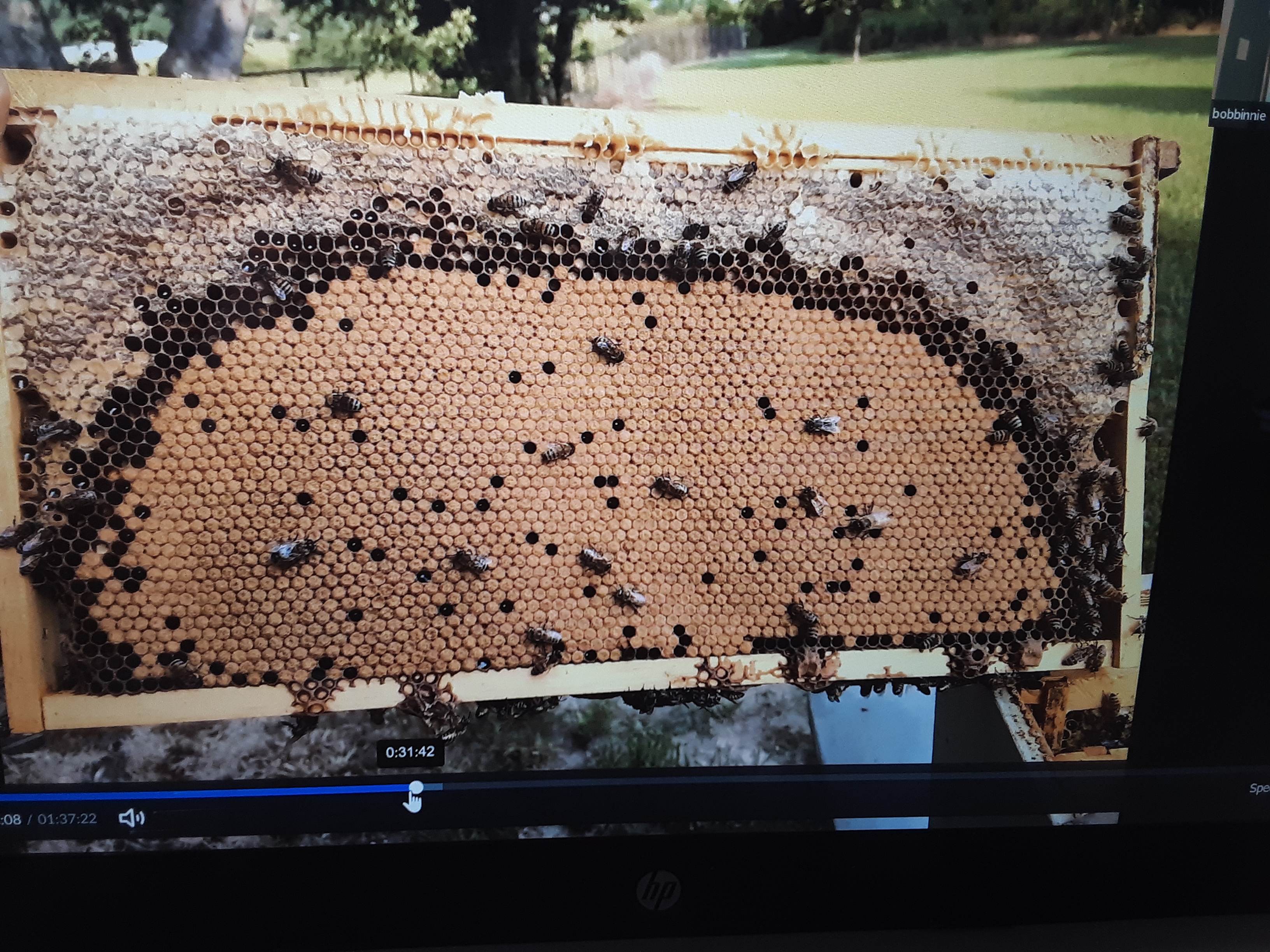Small number of developing queen cells usually on face of comb within the brood area.
Supersedure is replacement of a colony’s queen by rearing of a small number of queen cells to produce a new virgin daughter queen. Such queen cells are usually on the face of the comb surface and usually initiated from queen cups constructed from the face of cells in the brood area.
Normally, only a few supersedure cells (three to at most five) reach the cappedcapping:
the covering that bees add over comb cells containing fully ripened honey or to cap brood that has reached the pupal stage; bee bread cells are not capped queen cell stage. This contrasts with swarm behavior, when many cells are usually constructed from queen cups at comb margins and are often numerous (more than five).
queen cell stage. This contrasts with swarm behavior, when many cells are usually constructed from queen cups at comb margins and are often numerous (more than five).
Supersedure may occur anytime but is usually a summer behavior. It can be induced by injuring a queen (cutting off one of her front legs for example) or by making a gouge indentation within the brood area followed by the workers building a queen cup in the indented area.
Emergence of a daughter queen while the mother (the mated queen) is still present is called efficient supersedure. In this case, there will be a two-queen colony, and there will be no break in the brood cycle, although the mated queen may be laying fewer eggs than her daughter, once the daughter is mated. In other instances, the original mated queen is killed by the workers (via balling) resulting in a brood break, where the colony lacks an egg-laying queen. This is called inefficient supersedure. It is not known why the colony may sometimes have the mother-daughter queen condition and other times not. Unless we look for it, we are not likely to note the mother-daughter queen condition.
Queen replacement queen replacement:
removal of an old queen and installation of a new queen in a bee colony
behaviors of swarming or emergency queen cells (the difference is the number of developing cells: usually a small number in supersedure).
Caron DM and Connor LJ. 2022. Honey Bee Biology and Beekeeping, Third Edition, Chapter 10. Wicwas Press, Kalamazoo, MI, US. 480 pages.
Collison C. 2017. A Closer Look: Queen Cells and Rearing Stimuli. Bee Culture. Accessed 2023. https://www.beeculture.com/a-closer-look-13/
Moore P. 2015. Honey Bee Queens: Evaluating the Most Important Colony Member. Bee Health. Accessed 2023. https://bee-health.extension.org/honey-bee-queens-evaluating-the-most-important-colony-member/
Burlew R. 2023. How to know a swarm cell from a supersedure cell. Honey Bee Suite. Accessed 2023. https://www.honeybeesuite.com/is-it-a-swarm-cell-or-a-supersedure-cell/
Gimlet. 2019. Perfect Supersedure. Beespoke Info. Accessed 2023. http://beespoke.info/2019/05/26/perfect-supersedure/
Cushman D. 2015. Supersedure Cells. David A. Cushman. Accessed 2023. http://www.dave-cushman.net/bee/supersedurecells.html